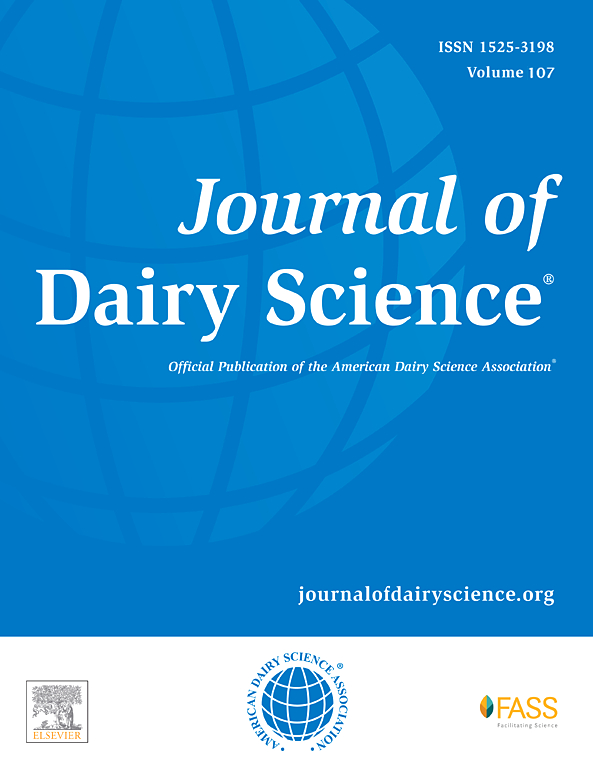Effect of milking interval and lactation stage on withdrawal period: Exemplified with a bovine oxytetracycline lactation physiologically based kinetic model
IF 3.7
1区 农林科学
Q1 AGRICULTURE, DAIRY & ANIMAL SCIENCE
引用次数: 0
Abstract
To safeguard human health, it is critical to avoid potentially harmful residues of veterinary drugs in dairy products. The aim of this study was to evaluate the impact of milk production on the excretion of drugs into milk using physiologically based kinetic (PBK) modeling with oxytetracycline as a case study. A nonlinear model for milk volume was developed to accurately describe the volume of milk within a cow's udder. The model was evaluated through Monte Carlo simulations and subsequently integrated into an established whole-body oxytetracycline PBK model for cows. The enhanced model facilitated simulations to ascertain the influence of lactation stage and milking interval on drug withdrawal periods. The findings indicated that for oxytetracycline, a drug characterized by low milk excretion, both the stage of lactation and the frequency of milking had minimal impact on the withdrawal period. However, simulations revealed that milking cows once a day, as opposed to twice, could extend the withdrawal period for one day. The timing of drug administration was found to have no impact on the withdrawal period for this particular drug. The model's reliance on a priori estimated parameters ensured that the predictions of the distribution and elimination of compounds within the udder compartment were solely dependent on lactation stage and milking intervals. This feature also allowed for the simulation of studies without milk volume data. Nevertheless, to formulate generalized recommendations on withdrawal periods, compounds with varying physicochemical properties must be evaluated.
为了保障人类健康,避免乳制品中出现可能有害的兽药残留至关重要。本研究的目的是以土霉素为例,利用生理学动力学(PBK)模型评估产奶量对药物排泄到牛奶中的影响。为了准确描述奶牛乳房内的乳汁量,我们建立了一个乳汁量非线性模型。通过蒙特卡罗模拟对该模型进行了评估,随后将其整合到已建立的奶牛全身土霉素 PBK 模型中。增强后的模型有助于模拟确定泌乳阶段和挤奶间隔对停药期的影响。研究结果表明,对于土霉素这种乳汁排泄量低的药物,泌乳阶段和挤奶次数对停药期的影响微乎其微。不过,模拟结果显示,每天挤奶一次而不是两次,可将停药期延长一天。对于这种特殊药物,给药时间对停药期没有影响。该模型依赖于先验估计参数,确保对乳房区内化合物分布和消除的预测完全取决于泌乳阶段和挤奶间隔。这一特点还允许对没有奶量数据的研究进行模拟。尽管如此,要制定关于停乳期的通用建议,必须对具有不同理化特性的化合物进行评估。
本文章由计算机程序翻译,如有差异,请以英文原文为准。
求助全文
约1分钟内获得全文
求助全文
来源期刊

Journal of Dairy Science
农林科学-奶制品与动物科学
CiteScore
7.90
自引率
17.10%
发文量
784
审稿时长
4.2 months
期刊介绍:
The official journal of the American Dairy Science Association®, Journal of Dairy Science® (JDS) is the leading peer-reviewed general dairy research journal in the world. JDS readers represent education, industry, and government agencies in more than 70 countries with interests in biochemistry, breeding, economics, engineering, environment, food science, genetics, microbiology, nutrition, pathology, physiology, processing, public health, quality assurance, and sanitation.
 求助内容:
求助内容: 应助结果提醒方式:
应助结果提醒方式:


